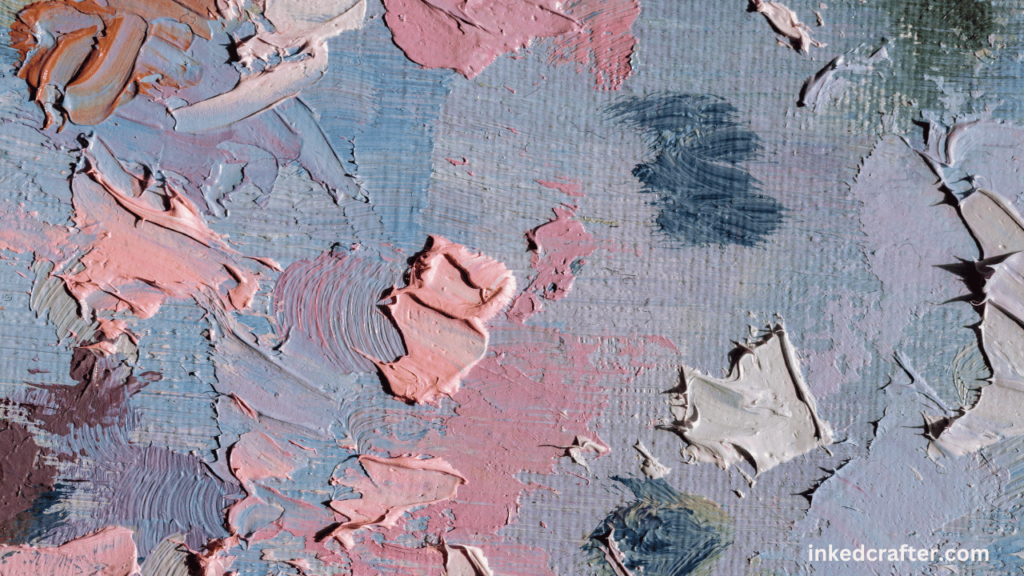For those delving into the world of painting, whether for DIY projects or home renovations, the question of whether you can paint oil-based paint over latex often arises. It’s a common query with a nuanced answer that we’ll explore in depth, breaking down the complexities into easily understandable terms.

Contents
Understanding Oil-Based and Latex Paints
Before we tackle the compatibility of oil-based and latex paints, it’s essential to grasp the fundamentals of each type of paint.
Oil-Based Paint: This type of paint consists of natural or synthetic resins and oils as its base, lending it a durable and glossy finish. Renowned for its longevity and resistance to wear and tear, oil-based paint is often chosen for surfaces that require a tough, protective coating. However, it comes with its drawbacks, such as the need for mineral spirits for cleanup and the presence of strong odors during application.
Latex Paint: Also referred to as acrylic paint, latex paint is water-based and dries relatively quickly compared to oil-based alternatives. It’s favored for its ease of cleanup with just soap and water, making it a popular choice for interior walls and ceilings. Latex paint is available in various finishes, including matte, satin, and semi-gloss, catering to different aesthetic preferences.
Can Oil-Based Paint Be Applied Over Latex?
The crux of the matter lies in whether it’s feasible to paint oil-based paint over latex. In simple terms, the answer is yes, but it requires careful consideration and adherence to specific steps to ensure a successful outcome.
Steps for Painting Oil-Based Over Latex
- Surface Preparation: Before diving into the painting process, it’s crucial to prepare the surface adequately. Start by cleaning the area to be painted, ensuring it’s free of any dirt, dust, or grease. A mild detergent solution and a clean cloth can effectively remove surface contaminants. Allow the surface to dry completely before proceeding to the next step.
- Sand the Surface: Once the surface is clean and dry, lightly sand the existing latex paint with fine-grit sandpaper. This step serves to create a slightly rough texture on the surface, promoting better adhesion of the oil-based paint.
- Priming the Surface: Applying a bonding primer specifically formulated to adhere to both latex and oil-based paints is essential for ensuring proper adhesion. The primer acts as a bridge between the two types of paint, promoting a strong bond and preventing issues such as peeling or flaking.
- Application of Oil-Based Paint: Once the primer has dried according to the manufacturer’s instructions, it’s time to apply the oil-based paint. Use a high-quality brush or roller for smooth and even coverage, ensuring that the paint is applied evenly across the surface.
- Allow Sufficient Drying Time: Oil-based paints typically have a longer drying time compared to latex paints. It’s essential to exercise patience and allow ample time for the paint to dry and cure properly before applying additional coats or handling the surface.
Benefits and Considerations
Mixing oil-based paint over latex offers several benefits, including:
- Enhanced Durability: Oil-based paints are known for their durability and resistance to wear and tear, making them suitable for high-traffic areas or surfaces exposed to harsh elements.
- Glossy Finish: Oil-based paints typically provide a glossy finish that adds a touch of elegance to any surface.
- Repainting Convenience: Painting oil-based over latex allows for repainting surfaces without the need to strip off the existing latex paint, saving time and effort.

Some considerations to keep in mind
- Compatibility: While it’s possible to paint oil-based over latex, the reverse is not recommended. Latex paint does not adhere well to oil-based surfaces, leading to poor adhesion and eventual peeling.
- Ventilation: Oil-based paints emit strong fumes during application and drying. Ensure adequate ventilation in the area to minimize exposure to harmful vapors.
- Cleanup: Since oil-based paint requires mineral spirits for cleanup, be prepared with the necessary supplies and follow safety precautions to avoid any adverse effects.
Conclusion
In conclusion, painting oil-based over latex is indeed possible with proper surface preparation and adherence to specific steps. By following the guidelines outlined in this comprehensive guide, you can achieve a professional-looking finish and prolong the life of your painted surfaces.
So, the next time you embark on a paint project, feel confident in your ability to mix oil-based and latex paints for stunning results!
FAQs
-
Can I Paint Oil-Based Paint Over Latex Without Sanding?
While sanding the surface before painting is recommended to promote better adhesion, it’s possible to paint oil-based over latex without sanding. However, keep in mind that sanding helps create a slightly rough texture on the surface, which enhances the bond between the paints. If you choose not to sand, ensure the surface is clean and free of any contaminants before applying primer and paint.
-
Do I Need to Use a Primer When Painting Oil-Based Over Latex?
Yes, using a bonding primer designed to adhere to both latex and oil-based paints is essential when painting oil-based over latex. The primer acts as a bridge between the two types of paint, ensuring proper adhesion and preventing issues such as peeling or flaking. Be sure to follow the manufacturer’s instructions for proper application and drying times.
-
How Long Does It Take for Oil-Based Paint to Dry Over Latex?
Oil-based paints typically have a longer drying time compared to latex paints. While latex paint may dry to the touch within an hour or two, oil-based paint can take several hours to dry completely. Factors such as temperature, humidity, and ventilation can affect drying times. It’s essential to allow ample time for the paint to dry and cure properly before applying additional coats or handling the surface.
-
Can I Apply Latex Paint Over Oil-Based Paint?
While it’s possible to apply latex paint over oil-based paint with proper surface preparation, it’s generally not recommended. Latex paint does not adhere well to oil-based surfaces, leading to poor adhesion and eventual peeling. If you’re considering repainting with latex paint, it’s best to either remove the existing oil-based paint or apply a bonding primer specifically formulated for such situations.
-
How Do I Clean Up After Painting with Oil-Based Paint?
Cleaning up after painting with oil-based paint requires mineral spirits or paint thinner. These solvents help dissolve and remove the paint from brushes, rollers, and other painting tools. It’s essential to follow safety precautions when handling mineral spirits, including proper ventilation and wearing protective gloves. Dispose of used solvents responsibly according to local regulations.








